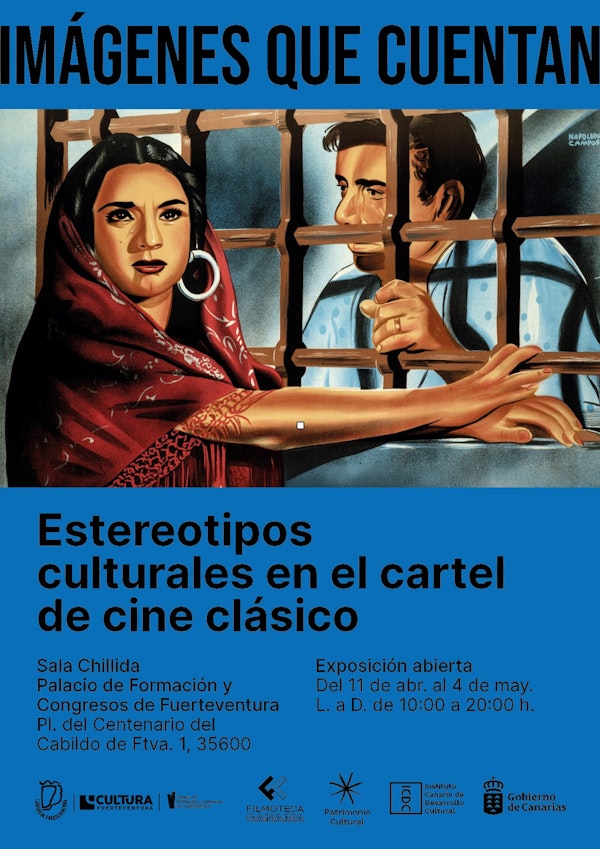“Images that count. Cultural stereotypes in the classic film poster” will be open to the public from April 11 to May 4 at the Palacio de Formación y Congresos de Fuerteventura.
As a tribute to the artist Pepe Dámaso, the posters of the fiction films he directed, “Umbría” and “Réquiem para un absurdo” (Requiem for an Absurd) are exhibited.
With the exhibition “Images that count. Cultural stereotypes in the classic film poster”, the Government of the Canary Islands, in coordination with the Department of Culture of the Cabildo of Fuerteventura, invites the public to discover the historical evolution of cinema and its impact on society through a selection of forty posters of the twentieth century belonging to the funds of Filmoteca Canaria. From this Friday, April 11, until May 4 in the Chillida Room of the Palace of Training and Congresses of Fuerteventura (Puerto del Rosario) you can enjoy this exhibition curated by researcher Goretti Garcia.
After passing through the Agáldar Museum in Gran Canaria and the Ermita de San Miguel in Tenerife, the traveling exhibition moves to Fuerteventura as part of the 40th anniversary of the creation of Filmoteca Canaria. The Heritage Unit of the Instituto Canario de Desarrollo Cultural (ICDC) organizes this exhibition to disseminate the historical and cultural importance of film posters not only as advertising tools but also as a reflection of the society of the time.
The visual richness of works by famous poster artists such as Jano, Soligó, Mataix, Albericio or A. Peris exemplify the evolution of artistic styles and film marketing strategies to capture the public’s attention, causing an undeniable influence on popular culture.
In this sense, this collection of posters goes beyond an advertising purpose, they are reproductions of cultural stereotypes, fashions and social customs. Feelings such as love, hate, friendship, joy or sadness are made visible in the film posters by means of image, color and typography as a powerful vehicle of transmission and expression.
It is worth noting that the exhibition is accompanied by a catalog containing the research of curator Goretti García on these heritage assets that are part of the production and dissemination of a film. To measure the extent of the influence of film posters on cultural identity, the author analyzes the configuration of traits and clichés based on elements and models imported through the seventh art.
Tribute to Pepe Dámaso
As a tribute to the painter and filmmaker Pepe Dámaso, the posters of the only two fiction films he directed, “La Umbría” and “Réquiem para un absurdo”, have been recovered. These pieces made by the artist himself are not mere posters but true works of art that reflect Dámaso’s highly personal aesthetic vision.
Through a visual language loaded with symbolism, the artist deals with universal themes such as death and the absurdity of human existence. Both works reflect very characteristic aspects of the imaginary of the “painter of skulls” and winner of the Canary Islands Fine Arts Award in 1996.
The opening hours of the Palace of Training and Congresses of Fuerteventura to visit the exhibition, from April 11 until May 4, is Monday to Sunday from 10:00 to 20:00 hours with free admission until full capacity.













